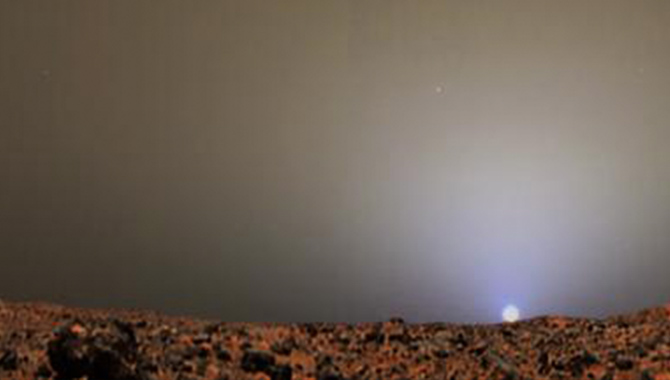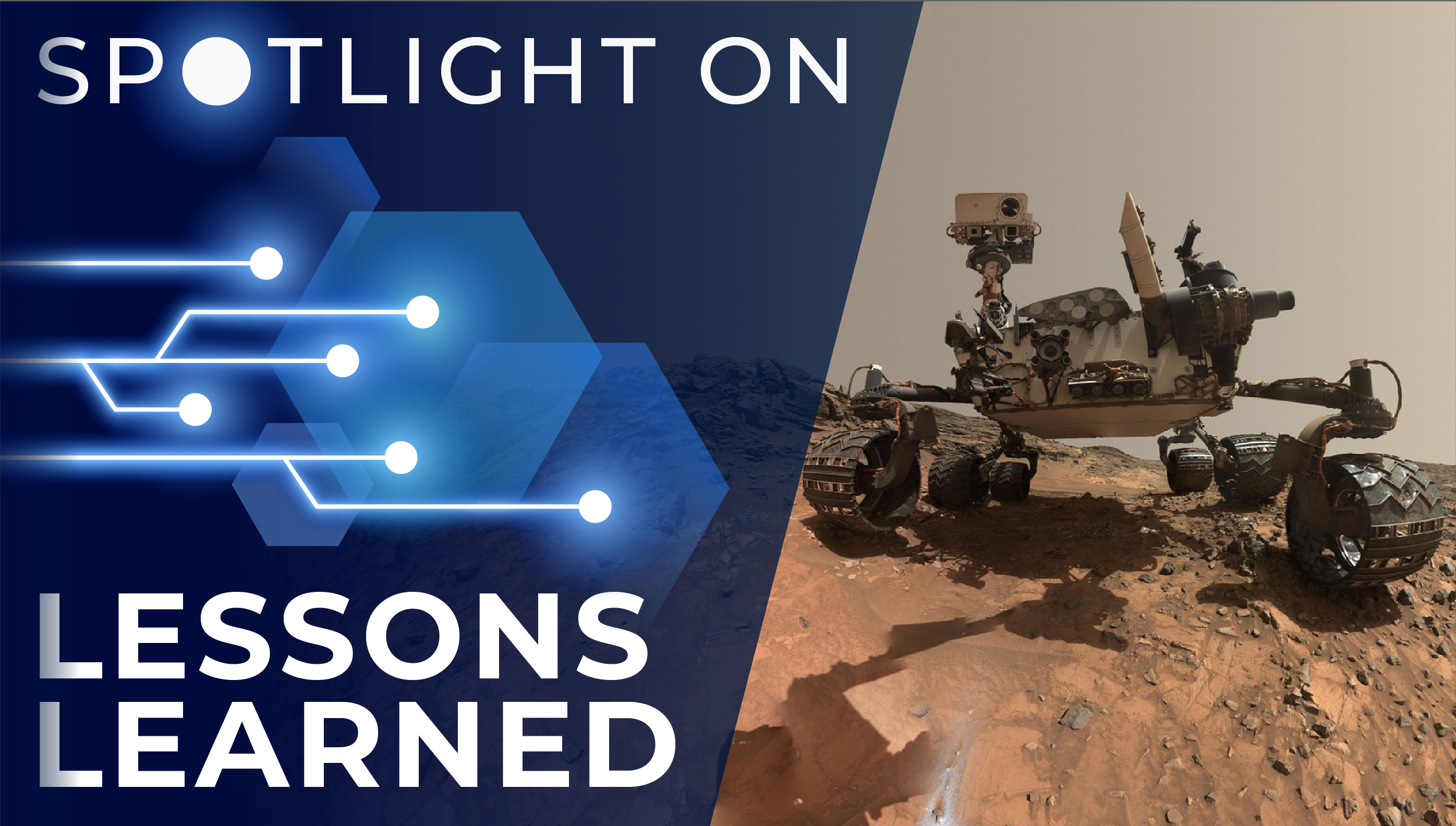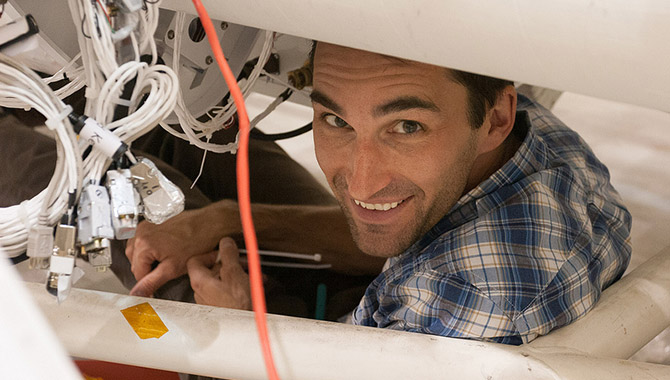
Composite of two images from the Mars Pathfinder mission depicting a sunset in the Martian Ares Vallis during July 1997.
Credit: NASA/JPL/University of Arizona
Twenty years ago, NASA’s innovative Pathfinder mission landed on Mars, kicking off 20 years of continuous presence at the red planet.
Pathfinder wasn’t the first lander to touch down successfully on Mars: Viking 1 and Viking 2 reached the Martian surface in 1976. For more than six years, the two spacecraft collected data on the red planet, offering the first close-up images of Mars while their orbiters mapped almost the entire planet from above. After Viking, the Soviet Union sent rovers to Mars, but none landed successfully. Two decades passed before a lander made contact with the Martian surface again.
Part of the reason for the delay was budgetary. The total cost of the Viking missions was approximately 1 billion dollars, and space agencies were not keen to make that investment in Mars again so quickly. When Pathfinder was selected to be the second project in NASA’s Discovery Program, which was dedicated to producing low-cost exploratory missions, some of its appeal lay in its comparative affordability. Developed during the heyday of the agency’s “faster, better, cheaper” period, Pathfinder was a shining example of NASA’s ability to marry innovation with cost effectiveness. Ultimately, the entire mission was conducted for a little over $250 million—including lander, rover, launch vehicle, and mission operations. A Congressional cost cap made adhering to the budget imperative: the team knew that if the mission went over on cost, it literally would not get off the ground.
Pathfinder’s objective was to demonstrate new, cost-effective technology for delivering a lander and rover to the Martian surface. Its novel technologies included using a supersonic parachute to slow the spacecraft’s descent through the thin Martian atmosphere and employing a revolutionary airbag system to break the lander’s impact when it reached the ground. In addition, the lander carried a stereoscopic camera plus an atmospheric structure instrument and meteorological package used to measure the Martian atmosphere during descent and provide weather measurements on the surface. The rover sported several scientific instruments as well: an alpha proton x-ray spectrometer to examine the composition of rocks and soil on Mars’ surface and three cameras to collect images of the terrain and document the performance of the mission’s technologies.
On December 4, 1996, Pathfinder left Cape Canaveral Air Force Station in Florida on a Delta II rocket and headed for Mars. Seven months later, on July 4, 1997, the spacecraft touched down at Ares Vallis, part of the same Chryse Planitia region of Mars that had been home to the Viking 1 mission. The descent and landing technologies performed flawlessly. Upon arrival, the lander was renamed Carl Sagan Memorial Station. The rover was called Sojourner in honor of civil rights activist Sojourner Truth.
The primary focus of the Pathfinder mission was to demonstrate technology that would enable the success of future Mars missions. What no one expected was that the lander and rover would produce an unprecedented amount of scientific data as well. Over the course of three months, Pathfinder returned 2.3 billion bits of information, including more than 17,000 images from the lander and rover combined. NASA and the rest of the world didn’t have to wait long to see Mars through Pathfinder’s eyes: on the day it arrived, the mission returned its first images. Later that evening, the images were shared with the public through the brand-new World Wide Web. NASA’s online Pathfinder material received more than 200 million views between July 4-8, which was a record at the time.
In addition to images, Pathfinder sent back 8.5 million meteorological measurements and more than 15 chemical analyses of Martian rocks and soil. Thanks to this data, scientists determined that Mars had once been warm and wet, hosting liquid water on its surface. They observed water ice clouds in the planet’s lower atmosphere in the mornings and, based on abrupt morning temperature changes noted by Pathfinder’s instruments, concluded that the atmosphere is warmed by the planet’s surface. Finally, they discovered that Mars’ central metallic core has a radius of 800 to 1,250 miles.
Pathfinder operated on the surface of Mars for three months: three times as long as expected for the lander and 12 times as long as anticipated for the rover. On September 27, 1997, the mission sent back its final data.
Managed by the Jet Propulsion Laboratory (JPL), Pathfinder was the first successful robotic rover on Mars, but it certainly wasn’t the last. The technology developed for Pathfinder served as a foundation for future Mars rovers and informed entry, landing, and descent plans for many missions that followed. Since 1997, eight other NASA landers and orbiters have arrived successfully at Mars, and the agency has continuously maintained at least one active rover on the surface or in orbit around the planet. Today, five NASA rovers as well as three from other nations are at work exploring the surface of Mars, setting the stage for the eventual arrival of manned missions to the red planet.
Learn more about Pathfinder in the ASK Magazine article Mars on a Budget.
Watch a 20th anniversary showcase of stories and discussion about the Pathfinder mission.










